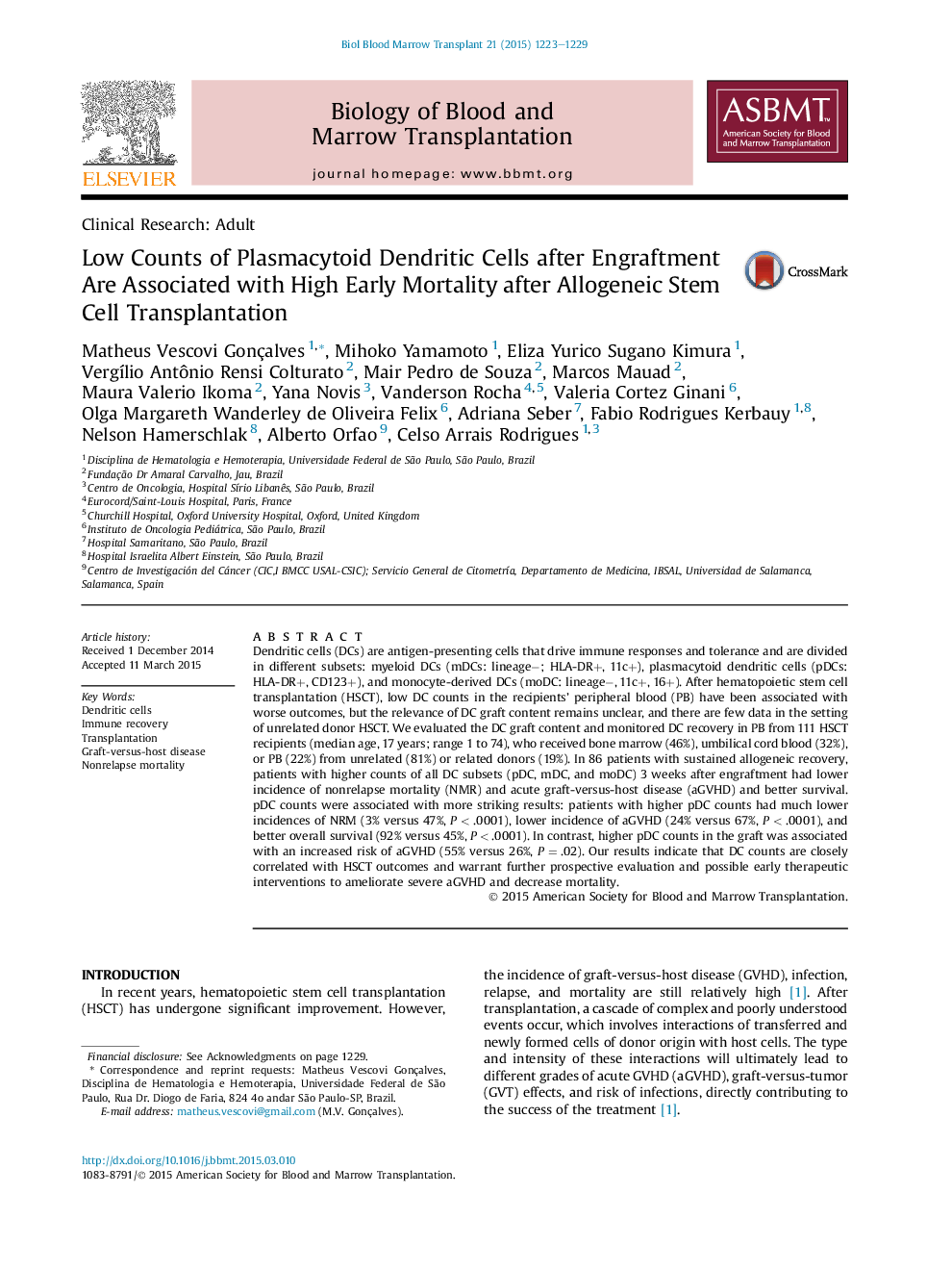| Article ID | Journal | Published Year | Pages | File Type |
|---|---|---|---|---|
| 2102246 | Biology of Blood and Marrow Transplantation | 2015 | 7 Pages |
Abstract
Dendritic cells (DCs) are antigen-presenting cells that drive immune responses and tolerance and are divided in different subsets: myeloid DCs (mDCs: lineageâ; HLA-DR+, 11c+), plasmacytoid dendritic cells (pDCs: HLA-DR+, CD123+), and monocyte-derived DCs (moDC: lineageâ, 11c+, 16+). After hematopoietic stem cell transplantation (HSCT), low DC counts in the recipients' peripheral blood (PB) have been associated with worse outcomes, but the relevance of DC graft content remains unclear, and there are few data in the setting of unrelated donor HSCT. We evaluated the DC graft content and monitored DC recovery in PB from 111 HSCT recipients (median age, 17 years; range 1 to 74), who received bone marrow (46%), umbilical cord blood (32%), or PB (22%) from unrelated (81%) or related donors (19%). In 86 patients with sustained allogeneic recovery, patients with higher counts of all DC subsets (pDC, mDC, and moDC) 3 weeks after engraftment had lower incidence of nonrelapse mortality (NMR) and acute graft-versus-host disease (aGVHD) and better survival. pDC counts were associated with more striking results: patients with higher pDC counts had much lower incidences of NRM (3% versus 47%, P < .0001), lower incidence of aGVHD (24% versus 67%, P < .0001), and better overall survival (92% versus 45%, P < .0001). In contrast, higher pDC counts in the graft was associated with an increased risk of aGVHD (55% versus 26%, PÂ = .02). Our results indicate that DC counts are closely correlated with HSCT outcomes and warrant further prospective evaluation and possible early therapeutic interventions to ameliorate severe aGVHD and decrease mortality.
Related Topics
Life Sciences
Biochemistry, Genetics and Molecular Biology
Cancer Research
Authors
Matheus Vescovi Gonçalves, Mihoko Yamamoto, Eliza Yurico Sugano Kimura, VergÃlio Antônio Rensi Colturato, Mair Pedro de Souza, Marcos Mauad, Maura Valerio Ikoma, Yana Novis, Vanderson Rocha, Valeria Cortez Ginani,
